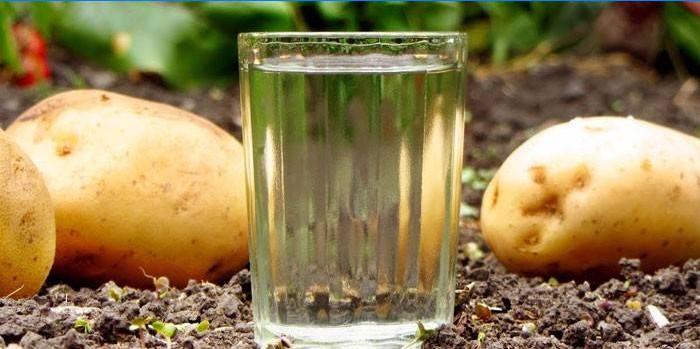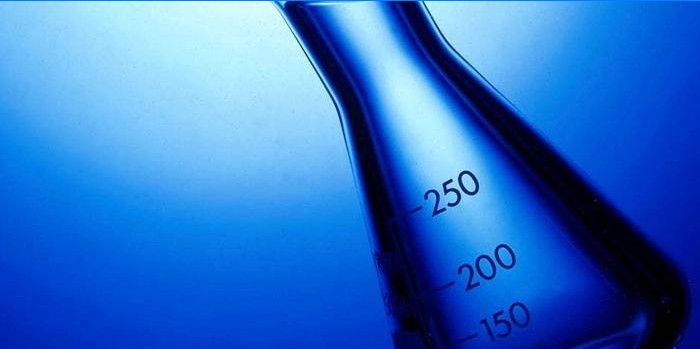The content of the article
- How to dilute moonshine
- What water to dilute moonshine
- How to dilute moonshine with water
- Formula
- Table
- How to dilute moonshine with water so that it does not cloud
Dilution of moonshine with water is a mandatory procedure that requires certain skills, experience and basic knowledge. Violation of technology, inaccurate proportions and even “wrong” water can lead to the fact that the crystal clear distillate becomes cloudy and loses its organoleptic properties. High-quality transparent alcohol with a pleasant taste and aroma can be obtained only subject to generally accepted rules. It is equally important to be able to use the Fertman table or a special calculation formula.
How to dilute moonshine
The strength of the distilled product can reach 90%, so drinking pure alcohol is strictly not recommended. The degree of the drink must be lowered, otherwise it will be far from the concept of good alcohol and will cause significant harm to health. Pure drinking water is used as the main diluent. The correct proportions play a key role, they will be prompted by the table of dilution of moonshine. In addition to water, spices and other additional ingredients are added to alcohol, which give it a new taste, pronounced smell and beautiful noble color:
- Oak bark will dilute the palette of aromas with distinct notes of whiskey.
- A few crystals of citric acid will soften even strong alcohol..
- Prunes give a sweet smoked flavor, it can be combined with other dried fruits.
- Pleasant bitter taste gives the zest of lemon or orange.
- Dry tea leaves will give saturated cognac color (at the rate of 1 tbsp. Per three-liter jar of vodka). Instead of tea, you can use instant coffee.
- To enrich the taste after dilution, add spices to alcohol – ginger, cloves, nutmeg, rosemary, saffron, star anise, cardamom, vanilla, cinnamon.
- Juniper trap is prepared with strong alcohol, adding about 40 grams of juniper berries for every liter of moonshine.
- Melissa, yarrow, St. John’s wort and other aromatic herbs will turn moonshine into an original tincture with healing properties. Such a product will be an excellent basis for home balm.
- As a sweetener, use roasted sugar, fresh or fermented honey, fruit or berry juice.

What water to dilute moonshine
The ideal water for diluting moonshine is spring water. It is important to take it from a proven place, for example, a familiar well or spring in the forest, away from the roadway. The trade-off is bottled water from a manufacturer with a good reputation. Tap water contains a large amount of impurities that will affect transparency and make the drink cloudy, so it is not recommended to use it. In the absence of an alternative, raw rather than boiled tap water is added. Then the diluted alcohol is purified using a natural filter – charcoal.
How to dilute moonshine with water
Before diluting pure moonshine, the right amount of water is prepared in advance. Mixing occurs in one step, gradually bring the alcohol “to taste” does not work. Correctly diluting the drink is just as important as making a good brew and buying a quality moonshine. Alcohol is a strong oxidizing agent, so it is poured into water, and not vice versa. Otherwise, the pervach will become cloudy and almost hot due to a chemical reaction. You can calculate the proportions using the formula and even without it – there is a ready-made breeding table for moonshine.

Formula
There is a special formula for diluting moonshine with water – v = (a / b) * s – s. Knowing only 2 quantities, it can be used to calculate ideal proportions in 3 actions. The current strength of the distillate (a), for example, 80 degrees, is divided by the desired strength of the drink (b), the best option is not higher than 40 degrees. The result is multiplied by the volume of moonshine (c) obtained after distillation. The resulting figure is divided by the available volume of distillate (c). The result (v) is the amount of liquid that must be added to alcohol to obtain the desired alcohol strength.
Table
Russian chemist Grigory Isaakovich Fertman created a table with the help of which it is easy to find out the correct proportions of alcohol dilution without independent calculations. In the left column are the strength of moonshine after distillation (from 35 to 95%). In the upper horizontal line, select its expected strength (from 30 to 90%). The volume of water required for the desired result is at their intersection. For example, 1172 ml of liquid is required to produce 40% alcohol from 85% distillate. The classic table for diluting moonshine with water is designed for 1 liter of the original product.

How to dilute moonshine with water so that it does not cloud
If you breach the moonshine dilution technology or use unsuitable water, the finished drink will become cloudy already at the final stage, when it remains to fill it in bottles. For alcohol, boiled water is “dead” water, which destroys its organoleptic properties and transparency. If it is the cause of turbidity, activated carbon or any other sorbent is placed in the moonshine for a week, the filtration is repeated 6-7 times. A few secrets and recommendations will help preserve the purity of alcohol or restore transparency after dilution without compromising on taste.
- When diluting, the water temperature should not exceed 20 degrees.
- The distillate is poured into glass bottles / jars, as the plastic may react with alcohol.
- The cause of turbidity are precipitated esters. They accumulate in the “head” or turbid fraction – the “tail” after the secondary distillation, therefore it is important to complete the selection of the product on time.
- If there are a lot of esters and it is planned to prepare a strong alcoholic drink, for example, gin, alcohol is diluted to a strength of at least 50%.
- The carbon filter will lighten the drink, relieve fusel and essential oils, aldehydes, impurities.
- After dilution to the desired strength, alcohol is poured into the container at the very neck to avoid the formation of formic acid, to exclude chemical reactions.
- A test portion of the distillate is diluted separately to track the appearance of sediment..
- The drink will become warmer and cloudier immediately after dilution due to the hydration reaction. He is allowed to brew for a couple of weeks.

I’m curious about the process of diluting moonshine properly. Can anyone offer some guidance on the ideal proportions of water to moonshine? What type of water is best to use – distilled, filtered, or tap water? Any recommendations or tips to ensure the best result? Thanks in advance for your help!
Diluting moonshine requires precision. Ideally, mix water with moonshine at a ratio of 2:1 to achieve a reasonable alcohol content. Use distilled or filtered water to avoid altering the taste. Tap water may contain impurities that could affect the final product. Experiment with smaller batches to find your desired strength, and always taste-test along the way. Patience pays off, so take your time and adjust as needed until you achieve the perfect balance. Enjoy responsibly!